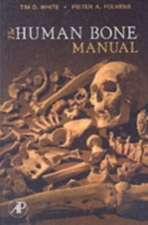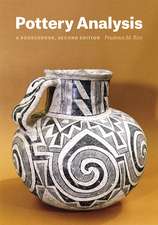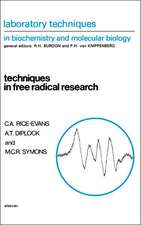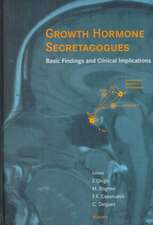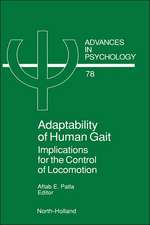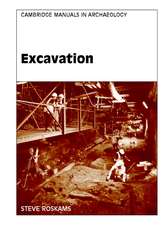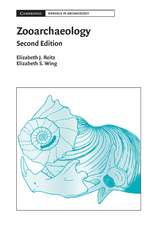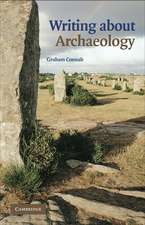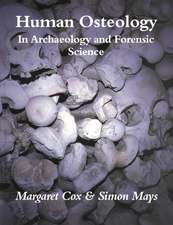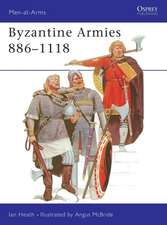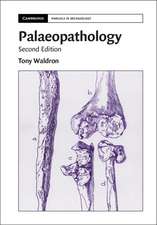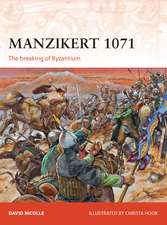Human Osteology
Autor Tim D. White, Michael T. Black, Pieter A. Folkensen Limba Engleză Hardback – 2 mar 2011
Osteologists, archaeologists, anatomists, forensic scientists and paleontologists will all find practical information on accurately identifying, recovering, and analyzing and reporting on human skeletal remains and on making correct deductions from those remains.
- From the world renowned and bestselling team of osteologist Tim D. White, Michael T. Black and photographer Pieter A. Folkens
- Includes hundreds of exceptional photographs in exquisite detail showing the maximum amount of anatomical information
- Features updated and expanded coverage including forensic damage to bone and updated case study examples
- Presents life sized images of skeletal parts for ease of study and reference
Preț: 504.86 lei
Preț vechi: 696.19 lei
-27% Nou
Puncte Express: 757
Preț estimativ în valută:
96.61€ • 100.26$ • 80.75£
96.61€ • 100.26$ • 80.75£
Carte tipărită la comandă
Livrare economică 08-22 martie
Livrare express 08-14 februarie pentru 138.77 lei
Preluare comenzi: 021 569.72.76
Specificații
ISBN-13: 9780123741349
ISBN-10: 0123741343
Pagini: 688
Dimensiuni: 216 x 276 x 46 mm
Greutate: 2.29 kg
Ediția:3rd edition.
Editura: Elsevier
Locul publicării:United Kingdom
ISBN-10: 0123741343
Pagini: 688
Dimensiuni: 216 x 276 x 46 mm
Greutate: 2.29 kg
Ediția:3rd edition.
Editura: Elsevier
Locul publicării:United Kingdom
Public țintă
Undergraduate and graduate students studying human skeletal anatomy in physical anthropology, archaeology, and medical school courses aimed at the needs of coroners and forensic pathologists; essential basic reference and field manual for professional osteologists and anatomists, forensic scientists, paleontologists, and archaeologists.Cuprins
Preface to the Third Edition; Preface to the Second Edition; Preface to the First Edition; Introduction; Anatomical Terminology; Bone Biology and Variation; Skull: Cranium and Mandible; Teeth; Hyoid and Vertebrae; Thorax: Sternum and Ribs; Shoulder Girdle: Clavicle and Scapula; Arm: Humerus, Radius, and Ulna; Hand: Carpals, Metacarpals, and Phalanges; Pelvis: Sacrum, Coccyx, and Os Coxae; Leg: Femur, Patella, Tibia, and Fibula; Foot: Tarsals, Metatarsals, and Phalanges; Anatomical and Biomechanical Context; Field Procedures for Skeletal Remains; Laboratory Procedures and Reporting; Ethics in Osteology; Assessment of Age, Sex, Stature, Ancestry, and Identity of the Individual; Osteological and Dental Pathology; Postmortem Skeletal Modification; The Biology of Skeletal Populations: Discrete Traits, Distance, Diet, Disease, and Demography; Molecular Osteology; Forensic Case Study—Homicide: “We have the Witnesses but No Body; Forensic Case Study—Child Abuse, the Skeletal Perspective; Archeological Case Study—The Bioarcheology of the Stillwater Marsh, Nevada; Archeological Case Study—Anasazi Remains from Cottonwood Canyon; Paleontological Case Study—The Pit of the Bones; Paleontological Case Study: “Ardi, the Ardipithecus ramidus Skeleton from Ethiopia; Appendix 1: Imaging Methodology; Appendix 2: A Decision Tree (“Key) Approach to Tooth Identification; Appendix 3: Online Resources for Human Osteology

